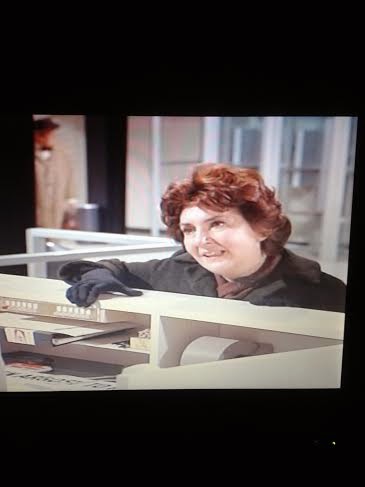So – my three favorite Starbucks in
Manhattan – at Bond
and Broadway, at 17th and Union
Square , at 39th and 8th –
always remind me of Diner. Why is that? At first blush it seems these types of
hangouts are quite different. Of course,
they are. I’ll confess that when I’m in
one of these places I’m not, like the ensemble six of Diner, debating the
relative merits of Mathis vs. Sinatra or engaging in braggadocio about how I can get a girl to grab my pecker on our
first date – but I certainly see groups of young men who are the 2014 versions
of these guys. I often wonder if they
even know what Diner is. No longer
young myself, I feel nostalgic pangs for the days when I and my buddies were on
the precipice of busting out into the world.
I always think of Barry Levinson’s initial effort in these situations,
and I guess it’s an open question as to whether or not allowing a movie to
intrude on your consciousness so often is a wise idea.
Whatever! What I hope to do on this blog is,
eventually, get to discuss each of the six male ensemble characters in the film
a little bit (the wife portrayed by Ellen Barkin is a cardboard cutout; in my
estimation Levinson at that juncture in his career could not create authentic
female characters, otherwise I would include her), one by one. This will hopefully be at sporadic and
unpredictable intervals. At random, we’ll
begin with Fenwick (played by Kevin Bacon; on the DVD Bacon gives an
interesting insight into something he did that helped him play the role very
effectively, for anybody who’s interested to that degree) and five scenes he
figures in prominently. Fenwick is an
impenetrable character. His motivation
is hard to understand. His burgeoning
alcoholism is not explained. His harsh
sarcasm and cynicism has no given backstory.
All of this, in my opinion, is to Levinson’s credit. He doesn’t cave in to the fear of presenting things
without reasons behind them.
I
list these simply for the sake of compilation:
1.
At the very beginning of the film, on Christmas night,
the camera picks up Fenwick in the basement of the building where the Christmas
party is being held, smashing windows and obviously drunk. Boogie (Mickey Rourke) appears and asks him
why he’s breaking the windows; he has no answer other than “It’s a smile.” He also makes an intellectual remark about
the composition of glass that presciently anticipates a later scene that shows
off his intelligence. He tells Boogie
that he dumped his date for five dollars with a kid named Frazer; when Boogie
observes that she’s only an eleventh grader and thus her intelligence is not
fully developed, Fenwick’s answer is “Yeah but her tits were.”
2.
Reconciled, through Boogie’s efforts, with his date, Fenwick
speeds his car down the road well ahead of the others (as they leave the party
to go to the diner) so as to be able to turn the car over and fake a serious
accident, smearing his face with catsup as fake blood. Once the gag is found out and Beth remarks, “Very
mature, Fenwick” his answer is “Fuck mature!”
3.
He watches a quiz show hosted by Allen Ludden (between
students from Cornell and Bryn Mawr!) and knows all the answers, bitterly
mumbling them or calling them out, confirming his intelligence and mastery of
this material.
4.
When Boogie gets into serious economic trouble due to
his wild, out of control betting habits, Fenwick tries to help out by going to
his brother Howard, whom he despises, to try to borrow money. Here we learn that he has a small trust fund,
doesn’t work, is estranged from the family, and hates Howard. Howard lectures him about reading Dale
Carnegie and refuses to lend him the money to help Boogie.
5.
Smashed, he strips to his underwear and climbs into the
manger in the life sized nativity scene on the front lawn of a local church. (There’s a continuity error here. The manger is empty, without the baby Jesus
statue in it – as is the case in most scenes of this kind up until Christmas
eve, when the baby would be placed in the crib.
However, the first scene of the film was shown with the title Christmas
Night, so presumably this scene is occurring later, so presumably the baby would
have been placed in the crib already.)
When Billy, Shrevie and Eddie come to try and fetch him he creates a
scene of general chaos, fighting and knocking over statues, landing everybody
in jail for the night.



























































